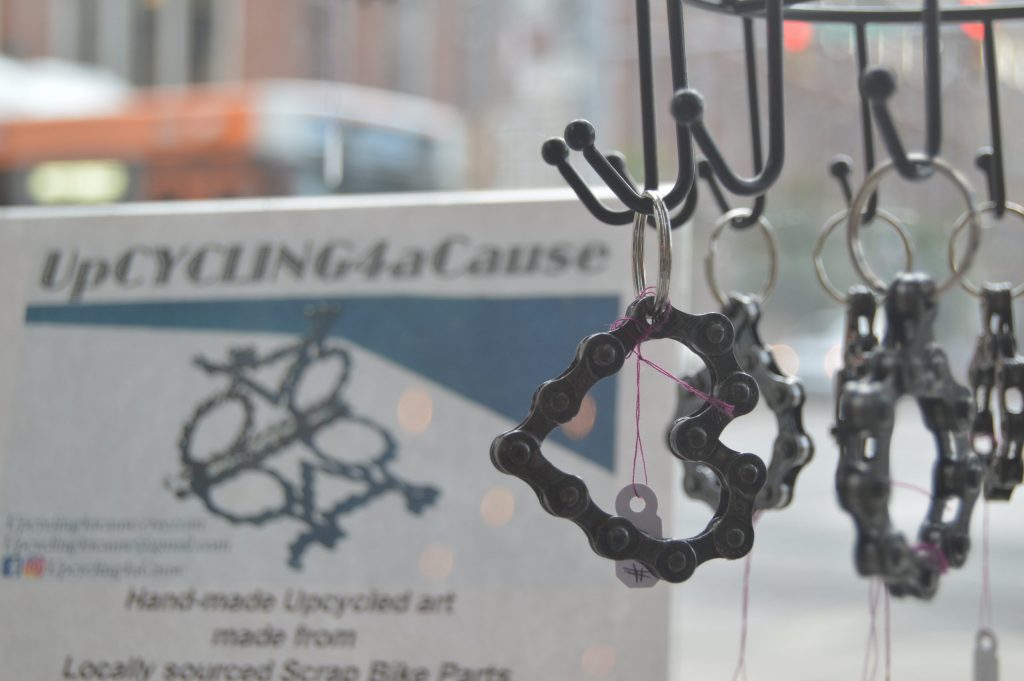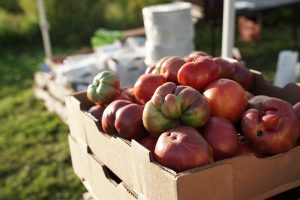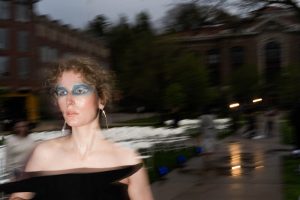One person’s trash creates new treasures
One person's trash creates new treasures

Art and sustainability have a common similarity: intention. Both require consideration of every choice made to create products that ensure customers get the best. Sustainable artists are taking intentionality to a new level by innovating and creating work that is not only creative, but eco-friendly. And customers love it, especially young ones.
Recently the study, “Gen Z Shoppers Demand Sustainable Retail,” showed that Generation Z, which is anyone born after 1996, is willing to spend up to 10% more on sustainable products rather than buying something that has been mass-produced. The study also showed that this generation is more likely to take brand values and principles into consideration before making a purchase.
Lilyan Minicozzi is a 17-year-old sustainable artist, owner of Lilac Sun, and a high school student from Rome, N.Y. She has sold her jewelry, backpacks, keychains, and hats at Wildflowers in Syracuse and through Instagram for a little over a year but has been making jewelry for most of her life. She said she has seen a notable uptick in interest around her products over the last year because her customers — which, according to Minicozzi, are predominantly high school and college students — appreciate that she makes her art from vintage, recycled and sustainable materials.
Dan Reeder, the artist and owner of Bar Fly Creations, upcycles old computer parts, driftwood and bar supplies. He sells his art on Facebook and at local art fairs, such as the Westcott Street Cultural Fair on Sept. 26. He said Gen Z has taken interest in his computer art because they love that it’s local, recycled and being used in a new way.
“It feels like everything I do for this artwork has potential, color, texture, form,” Reeder said. “It’s a matter of enjoying thinking about what it could be, or what it wants to be.”
What would be considered trash by many has been some of the biggest inspiration for these artists.
“I tell myself I can only throw away a bag of garbage a month art wise,” Minicozzi said. “Any scraps I have that are big enough to use I will use in other things and I’ll force myself to use them. It actually pushes me to create newer things and come up with new ideas, which is good creatively.”

Rob Niederhoff, the artist and owner of UpCycling4aCause, said nothing he makes goes to waste. He uses old bike parts to create anything he can think of — keychains, suncatchers, wine holders, costumes — and sells them on Etsy and in Wildflowers. Sometimes, he will sit and stare at a pile of bike parts until he is struck by inspiration.
“I see these things as puzzles,” Niederhoff said. “I know what I want, and I need to figure out how to get there. That’s thrilling to me.”
Niederhoff said everything he makes is with intention. He won’t make something unless it makes him feel good about the impact it will have on the environment. For example, he used to melt down beads to create the color in his suncatchers. Now, he uses old polystyrene and breaks it down with D-limonene, a chemical made out of the leftover material in orange juice to create the color. This makes his process completely eco-friendly because all the products used are recycled.
The tags on all of Minicozzi’s products are also an environmentally conscious decision to reduce waste. She makes her tags out of seed paper so her customers can plant them and grow flowers.
“It reminds people when they buy things that they should take every little thing they get and do something with it rather than throwing it in the garbage,” Minicozzi said.
All three artists expressed the importance of not only being environmentally conscious when buying art but also trying to buy local products as much as possible.
“Found things are a great way to go. It’s less toil on the environment,” Reeder said. It’s less trucking, less shipping, less extraction. They’re just found. It’s fun to have them be reused.”
“There are so many things floating around in the world,” Minicozzi added. “You want to choose something that will have a long life and that you won’t have to buy more than once.”





